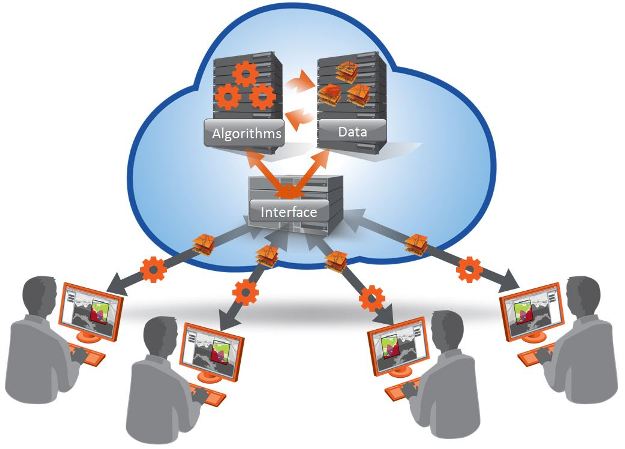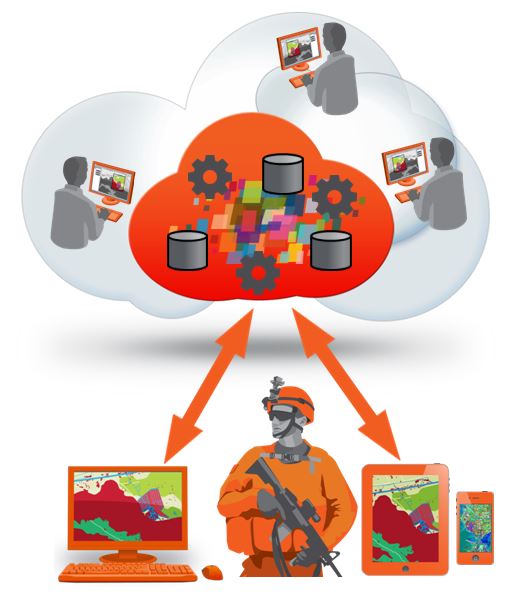Increase GEOINT Productivity Using Shared Image Analysis Workflows
Anonym

There are several challenges that inhibit current GEOINT productivity today. Analysts are often dispersed across a wide area, sometimes even internationally. Even in geographically close locations communications between teams may be non-existent. Even when communications channels are open, analysts running different software programs on separate networks are not really in a position to engage in co-productive activity. There is also such an enormous amount of data out there that analysts find it very difficult to identify which data is most useful for them and their mission. Beyond the enormous task of finding a specific data source, many times a derived product is duplicated because someone wasn’t aware that it already existed.
All these challenges increase the time it takes to analyze data and provide information down range. Analysts need programs that provide smart access to the data, algorithms, and products they need to provide information quickly. The National Geospatial-Intelligence Agency (NGA) has defined improved analytics capabilities as one of its major objectives over the next four years. This is aimed at creating interoperable frameworks to enable best practice sharing of GEOINT data, algorithms, and derived products. It hopes to answer many specific questions relating to data availability, preferred algorithms and methodology, tactics by region, product history and more. The purpose of this initiative is to create efficiencies within the analyst community as a whole, and to promote productivity.
There are a large number of benefits that can be realized from this type of implementation. These include the ability for geographically dispersed analysts to share knowledge and collaborate to solve problems. It also produces cost savings at a hardware, software, and resource level by centralizing things like data, licensing, and security. All these benefits help to identify both efficiencies and gaps within the process as a whole and allow for effective implementation of new procedures to address shortcomings and promote best practice. What does this mean over the long term? In short, it means better analysis for the forward deployed. Whether in the form of direct GEOINT deliverables, consumable apps, or simply a more informed soldier, the fact of the matter is better geospatial intelligence for defense and military means better decisions.
The three major, basic components of a distributed analyst network are the user interface, the data component, and the algorithm component. The user interface can be described as the program through which analysts interact with the data, algorithms, and other information available via the system. The data management component provides cataloging, search and discover, and data display capabilities to the user via the user interface, and the analysis algorithm component manages the algorithms, which are the executable analysis functions that can be run on the data in the catalog.

All three of these components interact via interoperability standards in order to retrieve data and algorithms, run analyses, display results, provide notifications of newly ingested data, products or algorithms, as well as track user behavior for efficiencies and best practice.
From increased collaboration among the workforce to reduced costs to the organization, to increased efficiencies and better decision making, the benefits of implementing a shared analysis environment across a dispersed network can’t be ignored. The combined expertise of a group far outweighs the effectiveness of a single asset, and in the end, the goal of all of this is to provide more accurate, relevant information to those who need it in time for meaningful action.
What are your thoughts? Do you think the benefits of shared analysis networks outweighs the potential time and resources to switch to this type of implementation?